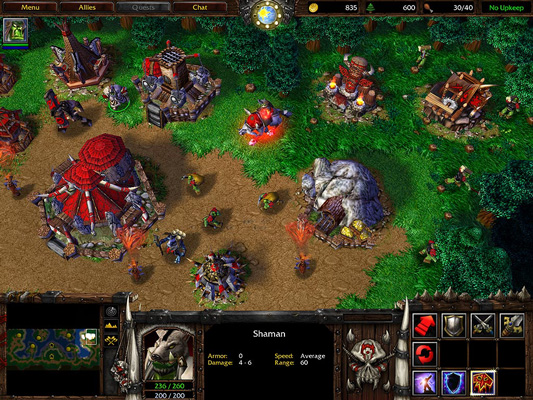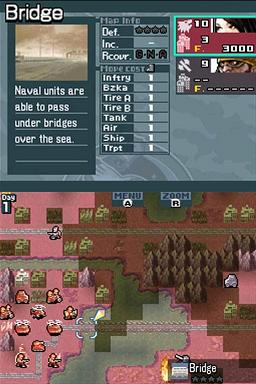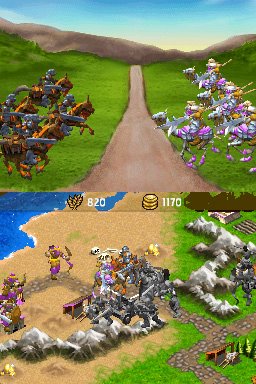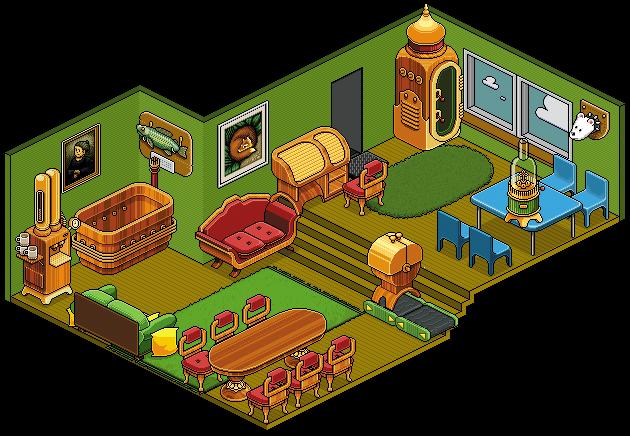The following was published in the June/July 2008 issue of Game Developer magazine…
The industry’s first video games – Pong, Asteroids, Space Invaders – were all 2D by necessity. A few early games experimented with basic 3D, such as Battlezone‘s vector-based tank simulator, but these games were simply interesting footnotes, not the mainstream. Everything changed in 1992 with id Software’s Wolfenstein 3D, which popularized 3D as the leading edge of game development. Since then, almost no corner of the industry has been left untouched by the transition from 2D to 3D graphics. Almost every franchise, from Mario to Zelda to even Pac-Man himself, has tried out 3D technology.
Now that this transition is essentially complete, it may finally be a good time to ask ourselves what we have learned in the process. What are the advantages of 3D? What are its challenges? For what is 2D still best? Perhaps game developers can now at last choose the best graphics environment on a game-by-game basis instead of making the move to 3D just from competitive pressure.
Troubles with Cameras
3D games and cameras have a long, troubled history. While first-person games are essentially a solved problem for 3D, most other genres are still adapting to the new technology. Teaching the player how to use a camera while also teaching the game’s core experience can be a tough challenge. One distinct advantage 2D games have is that easiest camera to teach is one which doesn’t exist. In fact, 3D game have been trending away from giving the player extensive camera controls.
Super Mario 64 is credited with being the first successful 3D platformer, but it required the player to make extensive use of the camera controls to keep Mario visible and heading in the right direction. Platformers attempted more intelligent camera systems over the years, trying to dynamically determine the best perspective at any given time. Such solutions, however, are bound to fail at some point, such as when the character gets stuck behind a corner or under a ledge. To solve this sticky problem, Prince of Persia: The Sands of Time introduced two alternative static camera perspectives that the player could access at any time. God of War took this approach a step further and enforced a single fixed camera for each of the game’s scenes, approaching the level design almost like a film cinematographer. Super Mario Galaxy has a dynamic camera without any controls whatsoever although it adopts a nearly top-down view to enable the player to always see the surrounding area. Other avatar-based games, such as World of Warcraft, prevent the player from tweaking the camera while moving, ensuring that the player can never end up running directly into the camera.
Strategy games have also gone through a progression of camera systems, similarly trending towards taking camera controls away from the player, or at least hiding them from the novice. Star Wars: Force Commander, one of the first 3D RTS games, had an infamously difficult free camera, which made finding the right angle to view your troops a constant chore. Warcraft 3 may be considered the first RTS to get 3D right. The designers achieved this feat by greatly restricting the camera’s freedom – the zoom range was minuscule, the pitch angle came directly from zoom, and the only camera rotation was attached to an obscure hot-key. Lead Designer Rob Pardo describes the process behind these restrictions:
With 3D, we decided to bring the camera down quite a bit and try out some things. The problem was with the camera pulled all the way down, it became a pseudo-third-person experience. It was disorienting when you went around the map, and it was difficult to select units in battle because your camera frustum was pointed in one direction so you didn’t have a good view of the battlefield. It was a challenge because we still wanted a fun strategy game. Eventually we pulled the camera into a more traditional isometric view, and that’s when we really started making progress.

But Which 2D?
Not all 2D games are the same. Two major styles have developed: “classic” 2D, which is a straight top-down (chess/checkers) or side-on (Sonic games) view, or isometric 2D, which tries to fake 3D with an isometric projection at a pre-set angle. Before making the full jump to 3D, many genres made a move from classic 2D to isometric 2D as an intermediary step. For example, the original Civilization had a traditional top-down grid view while Civ 2 had a three-quarters isometric view. While this new perspective gave the game world a more life-like appearance, the change did come at a cost to the user’s game experience. Namely, distances are much more difficult to judge on an isometric grid as the east-west axis takes up twice as many pixels as the north-south axis. To solve this problem, for Civ 4, our 3D perspective actually hearkened back to the original game as we showed the game’s grid straight ahead and not at an angle. The easier the players perceive the grid through the graphics, the better they can “see” their possible decisions.
It is significant that Advance Wars: Days of Ruin (DS), the latest version in this long-running series, has maintained the traditional chess-board view, keeping the player focused squarely on the core gameplay. The “chunky” unit art familiar to the series is a great example of an artistic style which flows from the limitations of the game’s presentation. In contrast, a game heavily influenced by the Advance Wars series – Age of Empires: The Age of Kings (DS) – chose to move the same game mechanics into an isometric 2D world. The transition was not altogether successful. Not only was the immediacy of the grid harder to follow, but because units extended beyond the edges of their tiles, selecting units and locations became a significant problem when groups of units overlapped one another. Thus, tile-based games tend to be more successful when a top-down view is adopted.


Graphics are not Gameplay
3D graphics are not the same things as 3D gameplay. For example, two sci-fi RTS games – Homeworld and Sins of a Solar Empire – use very similar 3D engines to recreate the vast scale and special effects of deep space combat. However, they do not share core gameplay as Homeworld is a “true” 3D game, meaning that ships could be moved freely along the z-axis, while Sins actually has 2D gameplay as the game is played on a single, flat plane, meaning that ships cannot fly above or below each other. In fact, the game could have been implemented with a 2D engine; using 3D was a secondary choice to enable smooth zooming and to evoke the “feel” of outer space. The team’s decision to adopt 2D gameplay saved Sins from the interface complications of Homeworld, which required two or three separate clicks to give units a destination in all three dimensions.
Many other example of hybrids exist, where games use 3D graphics to render essentially flat 2D gameplay. Super Smash Bros. Brawl, for example, is fought on a single, vertical plane that uses the 3D engine for the all-important animations and fluid background environments. Cliff Bleszinski has described the gameplay of Gear of War as a horizontal version of the classic 2D platform Bionic Commando. Instead of using the grappling hook to ascend from platform to platform, Gears players “jump” from cover point to cover point along a horizontal plane.
Essentially, most games can be divided into three play mechanic categories which are related to but semi-independent from the graphics:
* Tile-Based Games (Tetris, Puzzle Quest, Civilization, Oasis, NetHack)
* Single-Plane Games (Starcraft, Madden, Geometry Wars, Super Mario Bros.)
* Real-World Games (Portal, Super Mario Galaxy, Burnout, Boom Blox)
Good rules-of-thumb exist for each of these categories. Real-world games essentially require 3D graphics. Of course, the term “real” is not meant to be taken literally. The gun from Portal is not real, but the user enjoys playing with it because of the expectation that its unique behavior exists in harmony with the physics and gravity of our own world. The easiest way to guarantee that the player bring along assumptions from the real world is to immerse them in a 3D environment that looks, behaves, and feels real. These environments are the equivalent of what-you-see-is-what-you-get for games.
On the other hand, tile-based games usually work best as top-down 2D games, with little separating the player from the core game mechanics. For single-plane games, the choice comes down to largely one of aesthetics and technology. Can the game’s platform support 3D graphics smoothly? Does 3D provide an advantage, from either shared animations or dynamic effects or general flexibility, that makes the technology worthwhile?

All in all, 2D is an underrated style that is often unfairly ignored as an old technology. Developers should not underestimate the advantages of avoiding the technical overhead of maintaining a bulky 3D engine and asset pipeline. Furthermore, well-made 2D graphics never really go obsolete. Sulka Haro, lead designer of Habbo Hotel, likes to point out that their retro 2D style looks just as good today as when the game launched eight years ago. If they had used 3D, Habbo would probably be on its second or third engine by now. Once a 2D engine is up and running, the artists can focus on simply improving the game’s look piece by piece. If 2D helps clarify and communicate the underlying game mechanic, then all the better.

I think a worthy reference can be made here to Ascendancy, which used 2D sprites to represent a true 3D space. You could move ships in 3 dimensions and rotate the camera fully, and the sprites would simply turn to face you from any angle. In order to make sense of the space, it also made use of a flat, visible xy plane with a grid and lines extending from the grid to each ship and planet. The result was 3D gameplay without full 3D graphics, and the game was super fun (save for terrible enemy AI).
Anyway, nice post.
i remember loading up starcraft couple years ago (at the request of some college friends) and recalling how nice everything looked. Starcraft was out for around 8 years at the time.
And here was I, thinking Wing Commander precipitated the 3D revolution (up to, and including, inspiring the “3D” in Wolfenstein 3D).
Wasn’t Interactive Magic’s Destiny in 1996 the first 3D RTS game?
http://www.uziana.com/index.php?option=com_content&task=view&id=155&Itemid=30
I love how it took us as an industry close to 16 years before we can look at a technology objectively and decide whether we actually need it.
I wrote a not dissimilar article a while back (http://thkgamereview.blogspot.com/2008/03/terrible-graphics-crysis.html), mostly agreeing with you. However, I think you understate the use of 3D not just as a practical tool but one to increase immersion.
I honestly think Fallout is the most well done 2D game around. Recently, Odin Sphere featured some amazing 2D work, but the age of the sprite is probably behind us.
Pingback: IndustryBroadcast » Audio Article #48 - 2D vs 3D
Pingback: Game Developer Column 2: 2D vs 3D | iOpixels
Thank you very much for this article, you have expressed exactly how I feel. I’m sick and tired of all those bulky 3D games. In fact 2D is much more detailed and give game-players a lot of rooms for imagination.
Pingback: 翻訳記事:2D対3D | スパ帝国
Pingback: Game Design – Sunzo